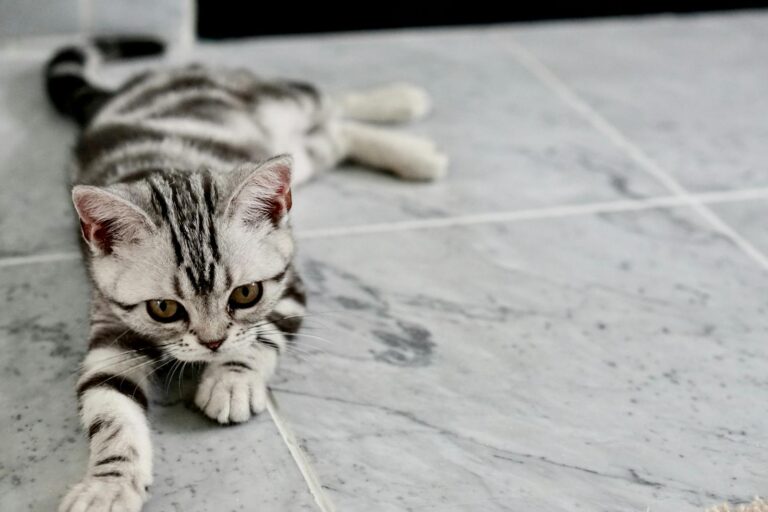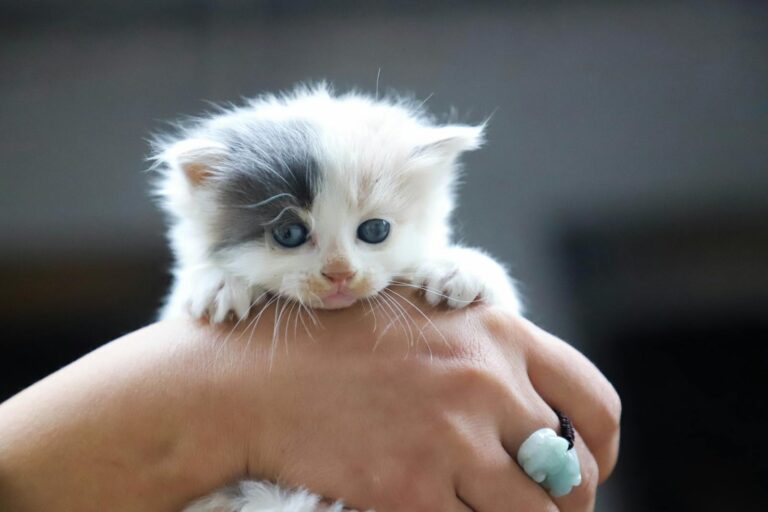How Often Should You Take Your Cat to the Vet?
When it comes to ensuring your beloved feline friend lives a long, healthy life, understanding how often you should take your cat to the vet is crucial. Regular veterinary checkups not only help in early detection of potential health issues but also play a significant role in preventive care and overall well-being. In this article, we will explore various aspects of feline veterinary care, from kittenhood through their senior years, while providing insights into recognizing signs that warrant immediate attention.
Understanding the Importance of Regular Veterinary Checkups for Cats
Regular veterinary visits are an essential part of responsible pet ownership. They provide a foundation for monitoring your cat’s health, implementing preventive measures, and addressing any emerging concerns promptly.
The Role of Preventive Care
Preventive care is the cornerstone of veterinary medicine. Just as humans benefit from routine physical exams, cats require regular checkups to stay on top of their health. These visits usually include physical examinations, vaccinations, parasite control, and discussions regarding nutrition and behavior.
Regular checkups allow veterinarians to:
- Identify Potential Health Issues Early: Many health problems can develop subtly over time. During routine exams, vets can detect conditions like dental disease, obesity, arthritis, and even specific cancers before they become severe.
- Update Vaccinations and Preventatives: Your veterinarian will ensure your cat’s vaccinations are up-to-date, protecting them against common diseases such as rabies, feline distemper, and feline leukemia.
- Educate Pet Owners: Checkups are an opportunity for owners to learn about their cat’s development, dietary needs, and behavioral issues, empowering them to make informed decisions.
Building Trust with Your Veterinarian
Establishing an ongoing relationship with a veterinarian is beneficial not just for your cat’s health but also for your peace of mind. A trusted vet can answer questions, alleviate concerns, and guide you through specific challenges related to your cat’s breed or lifestyle.
Developing this rapport ensures that when health issues arise, you already have a healthcare partner who knows both you and your pet well. Together, you can navigate any necessary treatments and adjustments to care plans.
The Impact of Fear-Free Practices
Fear-free veterinary practices focus on minimizing stress and fear during visits. This approach recognizes that cats may experience anxiety in new environments and unfamiliar situations. Emphasizing comfort and positive experiences during vet visits can lead to better outcomes for your cat, making it easier to schedule regular checkups.
Veterinarians trained in fear-free handling techniques can:
- Use calming pheromones and gentle handling to soothe anxious pets.
- Discuss desensitization strategies to help your cat feel more comfortable during future visits.
By prioritizing your cat’s emotional well-being, these practices can foster a more positive association with veterinary appointments.
Establishing a Baseline: Kitten vs. Adult vs. Senior Cat Veterinary Needs
Cats have different health requirements at various stages of their lives. Understanding these differences is vital to ensure they receive appropriate care throughout their lifespan.
Kitten Veterinary Needs
Kittens undergo rapid growth and development, necessitating frequent veterinary visits. After adopting a kitten, scheduling an initial vet visit within the first week is recommended.
During the first year, kittens typically need:
- Initial Checkup and Vaccination: This includes a thorough examination and the first round of vaccinations, which are crucial for preventing diseases.
- Spaying/Neutering: Many veterinarians recommend spaying or neutering around six months of age unless you plan to breed your cat. This procedure helps prevent unwanted litters and reduces the risk of certain health issues.
- Parasite Prevention: Kittens are prone to parasites like fleas, ticks, and worms. Your vet will recommend a suitable preventative treatment plan tailored to your kitten’s needs.
Adult Cat Veterinary Needs
As your cat matures into adulthood (typically between one and seven years old), veterinary visits can be less frequent, usually once a year. During these visits, important considerations include:
- Routine Health Exams: Annual checkups enable the veterinarian to monitor changes in weight, dental health, and overall condition.
- Vaccination Boosters: Ensuring your cat receives booster shots based on their vaccination history is critical in maintaining immunity against infectious diseases.
- Lifestyle Assessments: Factors such as diet, exercise, and behavioral changes can be discussed to optimize your cat’s health and happiness.
Senior Cat Veterinary Needs
Once your cat reaches their senior years (around seven years old and beyond), their veterinary needs may change significantly. Increased frequency of visits—at least every six months—is often recommended.
- Comprehensive Geriatric Assessments: Older cats may face more health challenges, including kidney disease, hyperthyroidism, and arthritis. Regular checkups facilitate early detection and management of these conditions.
- Blood Work and Urinalysis: Screening tests can reveal underlying issues that might not be apparent during a physical exam. Regular testing allows for monitoring of organ function and metabolism.
- Pain Management and Quality of Life Discussions: As cats age, managing pain and mobility becomes paramount. Your veterinarian can offer advice on how to improve your cat’s quality of life, including potential medications or lifestyle adjustments.
Annual Wellness Exams: What to Expect for Your Feline Companion
Annual wellness exams are an integral aspect of maintaining a cat’s health and longevity. Understanding what happens during these visits can help you prepare and make the most of your time with the veterinarian.
Preparing for the Visit
A little preparation goes a long way when it comes to veterinary appointments. Here’s how you can ensure a productive visit:
- Keep a Health Diary: Document any changes in behavior, appetite, or litter box habits leading up to the appointment. This information will assist the veterinarian in assessing your cat’s health.
- Gather Medical Records: Bring any relevant medical history, including vaccination records and previous illnesses or treatments, to share with your veterinarian.
- Ask Questions: Prepare a list of questions or concerns you may have regarding your cat’s health, behavior, or nutrition. Engaging in open dialogue with your vet can lead to valuable insights.
Physical Examination Components
During the wellness exam, your veterinarian will conduct a thorough physical assessment of your cat. Key components include:
- General Appearance Assessment: The veterinarian will observe your cat’s coat, body condition, and overall demeanor. These aspects can provide clues to your cat’s health status.
- Vital Signs Measurement: Heart rate, respiratory rate, temperature, and weight will be recorded. Abnormalities in these values may indicate underlying health issues.
- Full Body Examination: The vet will examine your cat’s eyes, ears, teeth, skin, abdomen, and limbs. This comprehensive evaluation helps identify any potential problems early on.
Discussion of Preventative Care
Following the examination, your vet will discuss preventive measures tailored to your cat’s needs. Topics may include:
- Vaccination Schedule: Updating vaccines and discussing any necessary boosters will help ensure your cat remains protected against preventable diseases.
- Parasite Control: Recommendations for flea, tick, and worm prevention will be reviewed based on your cat’s lifestyle and environment.
- Nutrition and Weight Management: Your vet may advise on appropriate diets and portion sizes to maintain optimal body weight and reduce obesity risks.
Recognizing Signs and Symptoms Requiring Immediate Veterinary Attention in Cats
While regular checkups are essential, there are instances where immediate veterinary care is necessary. Familiarizing yourself with warning signs can make a significant difference in your cat’s health.
Common Signs of Illness
Cats are known for hiding discomfort, making it imperative for owners to be vigilant. Some common indicators that may signal a health issue include:
- Changes in Appetite: A sudden increase or decrease in appetite could indicate various health problems, ranging from dental issues to systemic diseases.
- Lethargy or Behavioral Changes: If your normally active cat appears unusually tired or exhibits changes in their behavior, such as hiding or aggression, it warrants further investigation.
- Vomiting or Diarrhea: Occasional vomiting may not be alarming, but repeated episodes or the presence of blood in vomit or feces requires immediate veterinary attention.
Breathing Difficulties
Respiratory issues can be serious in cats. Signs of breathing difficulties may include:
- Rapid Breathing: An increased respiratory rate or labored breathing can indicate underlying conditions, such as asthma, pneumonia, or heart disease.
- Coughing or Wheezing: These symptoms can point to respiratory distress and should not be ignored.
- Cyanosis: A bluish tint to the gums or tongue signifies inadequate oxygen levels and is an emergency situation.
Urinary Issues
Urinary tract problems are common in cats and can lead to serious complications if left untreated. Watch for:
- Straining to Urinate: Difficulty urinating or vocalizing while attempting to do so may indicate a blockage, especially in male cats.
- Excessive Urination or Licking: Frequent trips to the litter box, particularly if accompanied by excessive licking of the genital area, warrant a veterinary visit.
- Blood in Urine: Hematuria, or blood in the urine, can signify infections, stones, or tumors and should be treated as an urgent concern.
Factors Influencing Veterinary Visit Frequency: Lifestyle, Breed, and Pre-existing Conditions
While general guidelines exist for veterinary visit frequency, individual factors contribute significantly to each cat’s unique care plan.
Lifestyle Considerations
The lifestyle of your cat greatly influences how often they should see the vet. Some key aspects to consider include:
- Indoor vs. Outdoor Cats: Outdoor cats face increased exposure to various risks, including accidents, infections, and parasites. Therefore, they may require more frequent veterinary visits compared to indoor-only cats.
- Activity Level: Cats that are physically active and engage in play are generally healthier. Conversely, sedentary lifestyles may lead to obesity-related health issues that necessitate closer monitoring.
- Diet: Cats on specialized diets or those prone to food allergies may require more frequent evaluations to ensure nutritional needs are met and allergies are managed properly.
Breed-Specific Health Issues
Certain cat breeds have unique health predispositions that may impact veterinary visit recommendations. For example:
- Siamese Cats: Prone to respiratory issues and dental problems, meaning they may benefit from more frequent dental checkups and assessments of their respiratory health.
- Persian Cats: Known for their brachycephalic (flat-faced) structure, they may have difficulty breathing and require additional monitoring.
- Maine Coons: This large breed is susceptible to hypertrophic cardiomyopathy (HCM). Regular cardiac evaluations may be advisable for early detection.
Pre-existing Conditions and Chronic Illnesses
Cats suffering from chronic health issues require tailored care plans. Factors affecting their veterinary visit frequency include:
- Chronic Kidney Disease: Regular monitoring of kidney function is crucial. Your vet may recommend biannual checkups for bloodwork and urine analysis.
- Diabetes: Diabetic cats need consistent monitoring to manage insulin therapy and ensure stable glucose levels.
- Thyroid Disease: Hyperthyroidism is common in older cats, requiring regular blood tests to adjust medication dosages as needed.
Cost Considerations and Planning for Your Cat’s Veterinary Care
Understanding the financial implications of veterinary care can help you plan effectively and ensure your feline companion receives the necessary medical attention.
Average Costs of Veterinary Visits
The costs associated with veterinary care can vary widely depending on location, clinic type, and services rendered. On average:
- Wellness Exams: Routine annual checkups can range from $50 to $150, depending on the complexity of services provided.
- Vaccination Fees: Individual vaccinations generally cost between $15 and $30 each, contributing to the overall expense during wellness visits.
- Diagnostic Tests: Blood work, urinalysis, and imaging (like X-rays) can add significantly to costs, with prices ranging from $100 to several hundred dollars depending on the tests performed.
Budgeting for Pet Healthcare
Creating a budget for your cat’s healthcare can alleviate financial stress and ensure adequate funds are available for routine visits and emergencies. Consider:
- Setting Up a Pet Health Savings Account: Contributing monthly to a dedicated savings account can help cover expected and unexpected veterinary costs.
- Pet Insurance: Researching and investing in pet insurance may provide financial relief in case of emergencies. Review policy details carefully to understand coverage limits and exclusions.
- Plan for Preventive Care: Allocating funds for annual checkups, vaccinations, and preventive treatments can protect against larger expenses down the line if issues arise.
Resources for Financial Assistance
If financial constraints limit your ability to seek veterinary care, several resources may provide assistance:
- Non-Profit Organizations: Various animal welfare organizations offer grants or low-cost clinics for pet owners in need.
- Payment Plans: Some veterinary clinics offer financing options that allow you to spread out costs over time instead of paying all at once.
- Community Programs: Local shelters or rescue organizations may host free or low-cost vaccination clinics or health fairs, providing much-needed services.
Conclusion
Understanding how often you should take your cat to the vet is vital for their health and longevity. Regular checkups, tailored to their age, lifestyle, breed, and any pre-existing conditions, form the backbone of responsible pet ownership. By staying vigilant to signs of illness and planning for veterinary care, you can ensure that your feline companion receives the best possible attention throughout their life, ultimately leading to a happier and healthier bond between you and your furry friend.







